In the Footsteps of Wainwright
Article by Chris Butterfield
THWACK! As the vehicle abruptly stopped, Wainwright lurched forward, his freshly lit tobacco pipe nearly escaping his grasp. “Oops,” Eric uttered nervously, hastily checking Wainwright was okay. “I think the tracks are broken, so we will have to navigate the rest of this bog by foot.”
Three decades have passed since Wainwright’s death, yet my mind often wanders to his remarkable legacy: A Pictorial Guide to the Lakeland Fells. By retracing his steps and exploring the landscapes he cherished, we keep his memory vibrant and honour his extraordinary contributions.
Wainwright grew increasingly critical of the changes encroaching upon the area in his twilight years. The once tranquil Lakeland towns saw a surge in cars and coaches, bringing a deluge of tourists. Parking lots and caravan sites proliferated, marring the valleys he loved dearly. Nostalgia often grips us, longing for a time when life was less complicated and summers felt endlessly warm. I ponder how Wainwright would perceive today’s world, dominated by smartphones and the ever-present hum of social media.
The past was the centrepiece of a day organised by Richard Else and me, a trek to Haystacks commemorating the 35th anniversary of AW’s final ascent in 1985. It was a day steeped in sentiment for Richard, the original BBC Wainwright series producer, as vivid recollections of that damp, chilly day resurfaced.

Priscilla and I rendezvoused with Richard and his wife, Margaret, at the Honister Slate Mine. The scene was starkly different from the one etched in Richard’s memory from over thirty years ago. The elements had been harsh and unforgiving back then, but today, a serene summer morning greeted us, the air still and welcoming.
Immersed in a sea of nostalgia, Richard carried a piece of history with him: the very Nikon camera and zoom lens that had been his companions on the original journey. The camera, a bridge between past and present, seemed to capture more than just images—it held stories, memories, and a tangible connection to those bygone days.
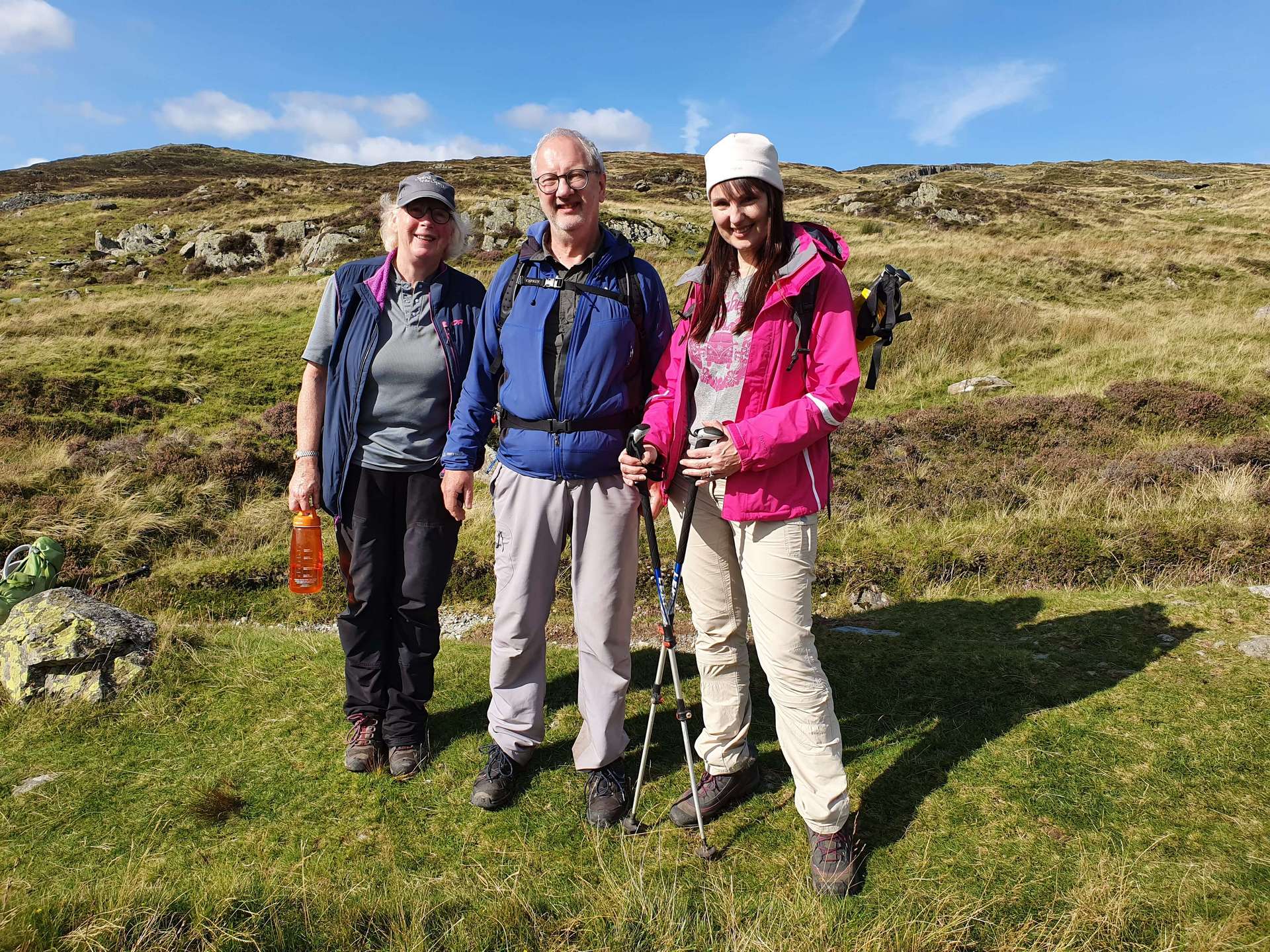
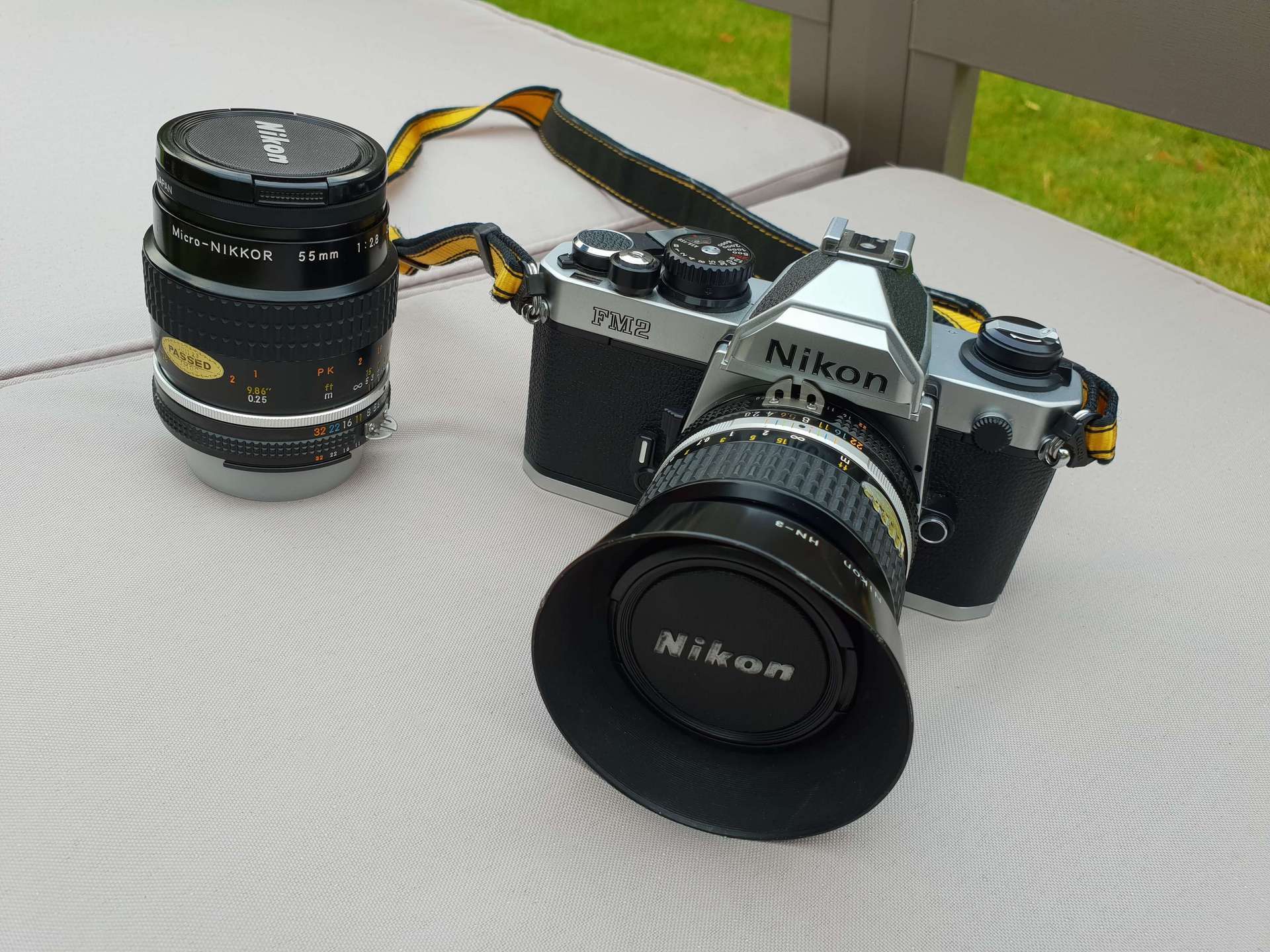
We traced the route along the abandoned tramway path leading to Dubs Quarry, situated near the base of Haystacks. As we embarked on our ascent, Richard’s mind wandered back to the original climb he undertook with Betty and the rest of the crew. They took the old mine road to the quarry to Dubs Hut, where they planned to disembark and carry the equipment the rest of the way.
As they gained height, Wainwright and Eric Robson were trailing behind them, nestled in a rented tracked vehicle, its driver manoeuvring it carefully over the rough terrain. Richard recalls looking back and seeing this noisy monstrosity slowly bumping its way up the road behind them, with its distinguished passengers just holding on for dear life. Still, it was the only vehicle they could acquire to get Wainwright as close as possible to the foot of Haystacks.

We neared the bothy at Dubs Quarry approximately an hour into our journey. It was here, Richard pointed out, that this was as far as they could go in the Land Rover on the original expedition. This spot also marked the hopeful point where Wainwright, aboard the tracked vehicle, was expected to get closer to Haystacks.
However, fate had other plans. A mishap occurred between Dubs Quarry and Black Beck Tarn: one of the vehicle’s tracks dislodged, bringing it to an abrupt halt. Consequently, AW and Eric Robson found themselves having to cover a bit more distance on foot than initially anticipated.
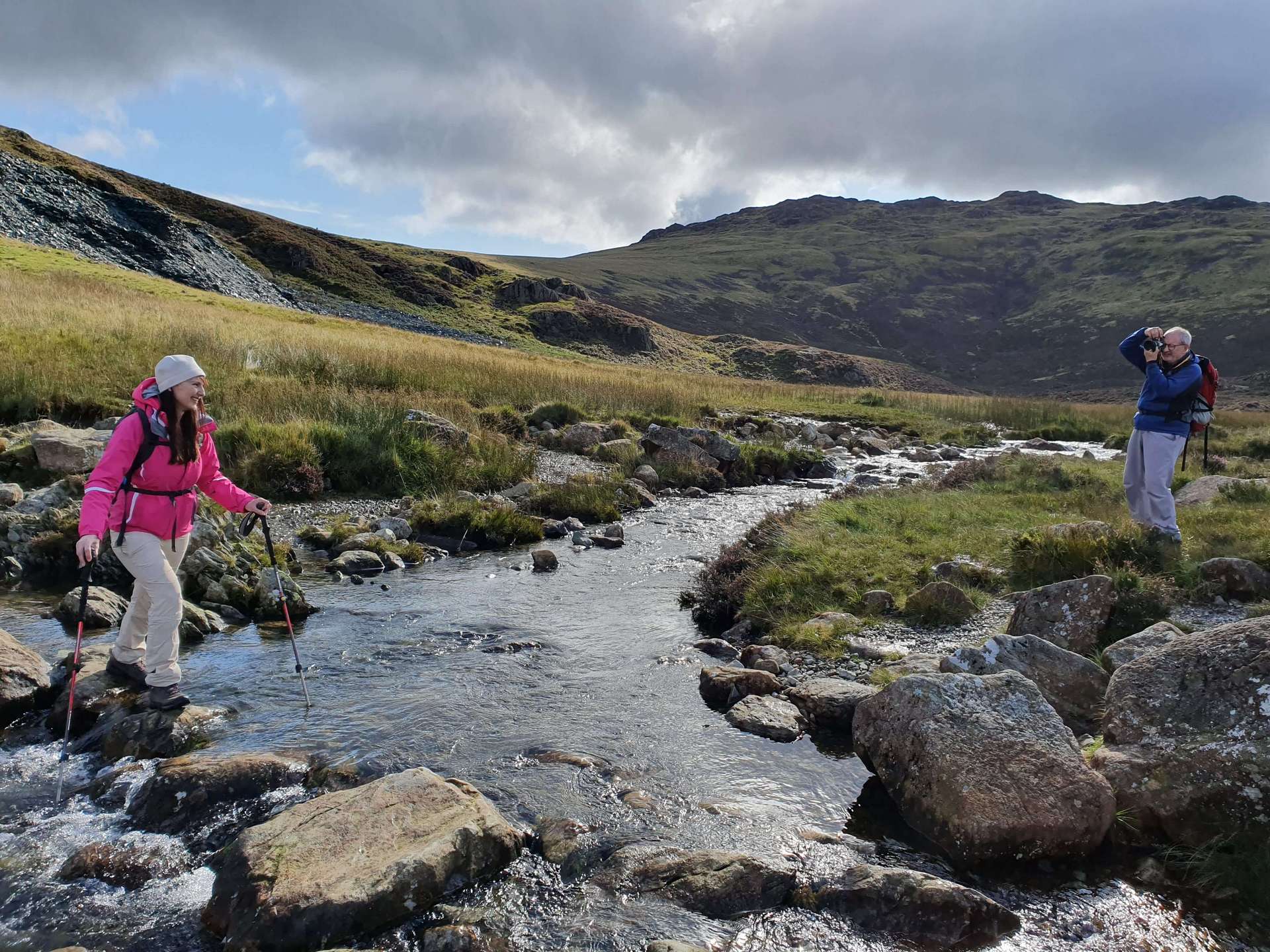
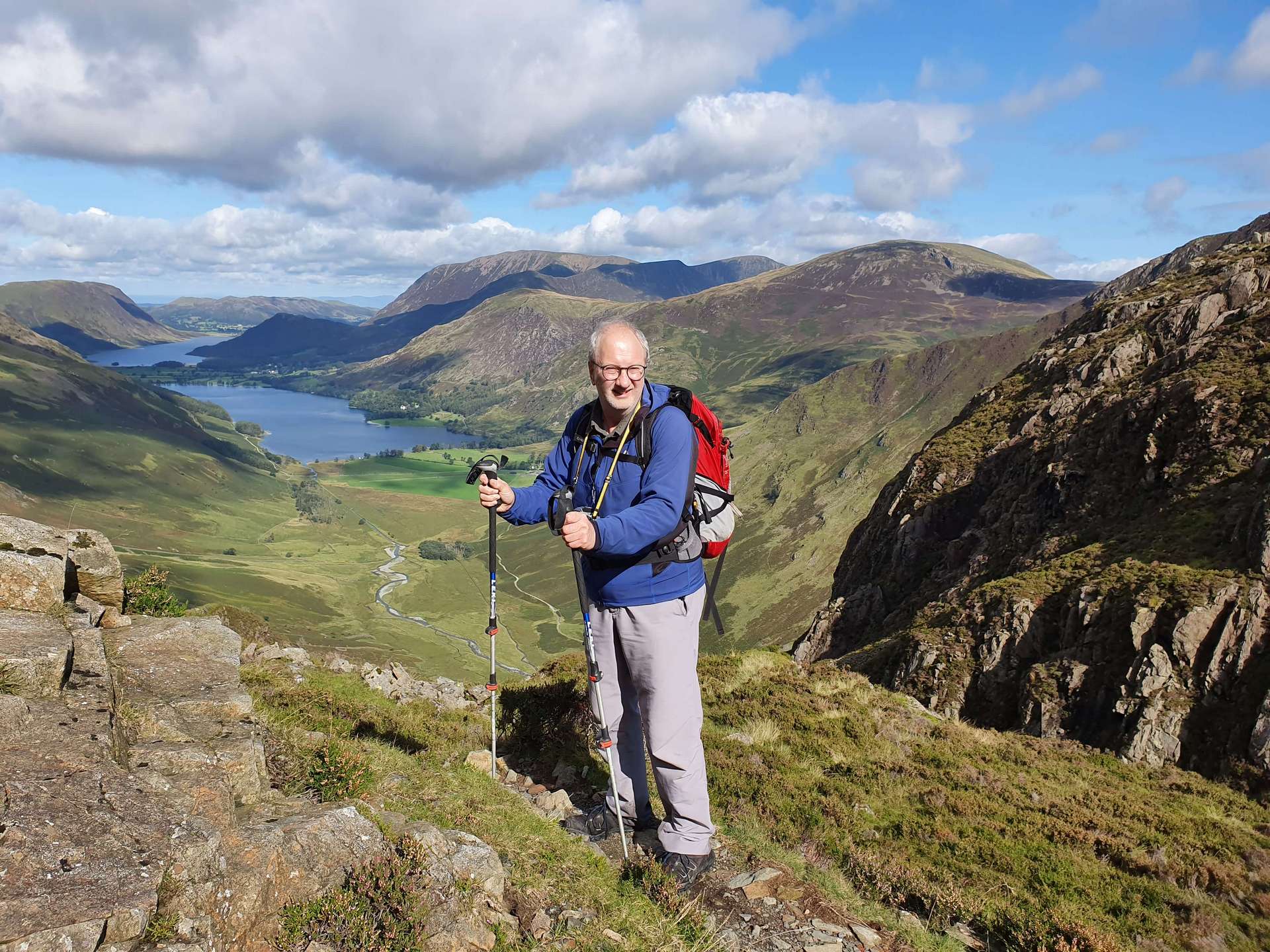
After a brief yet rewarding climb, we arrived at Innominate Tarn, where we settled down for lunch, basking in the generous warmth of the sun. After we had eaten, Priscilla and Margaret headed for the summit while Richard and I lingered by the tarn, soaking in the tranquil atmosphere.
The tarn’s water level had noticeably receded, complicating our task of pinpointing the exact spots where he had been captured on film. To assist our search, we referred to screenshots from the film, a bridge between past and present. It took us a couple of hours, but eventually, we managed to locate all the significant sites.
There was a particularly surreal moment when we discovered the very stone upon which Wainwright had once sat, lost in thought, as the camera discreetly recorded him from afar. Finding this solitary spot, untouched by time, felt like a direct connection to that bygone moment, a tangible link to the legacy and memories of Alfred Wainwright.

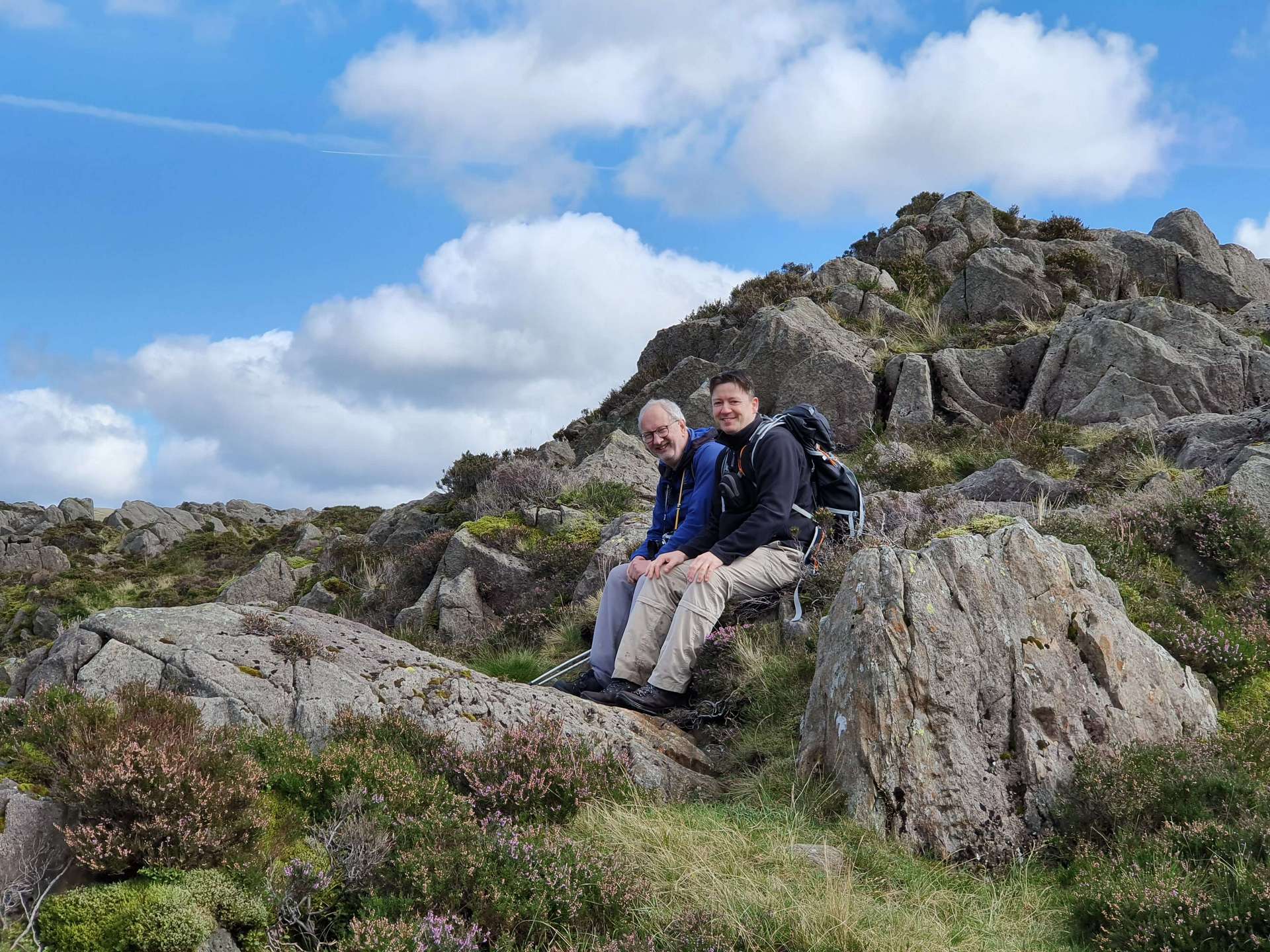

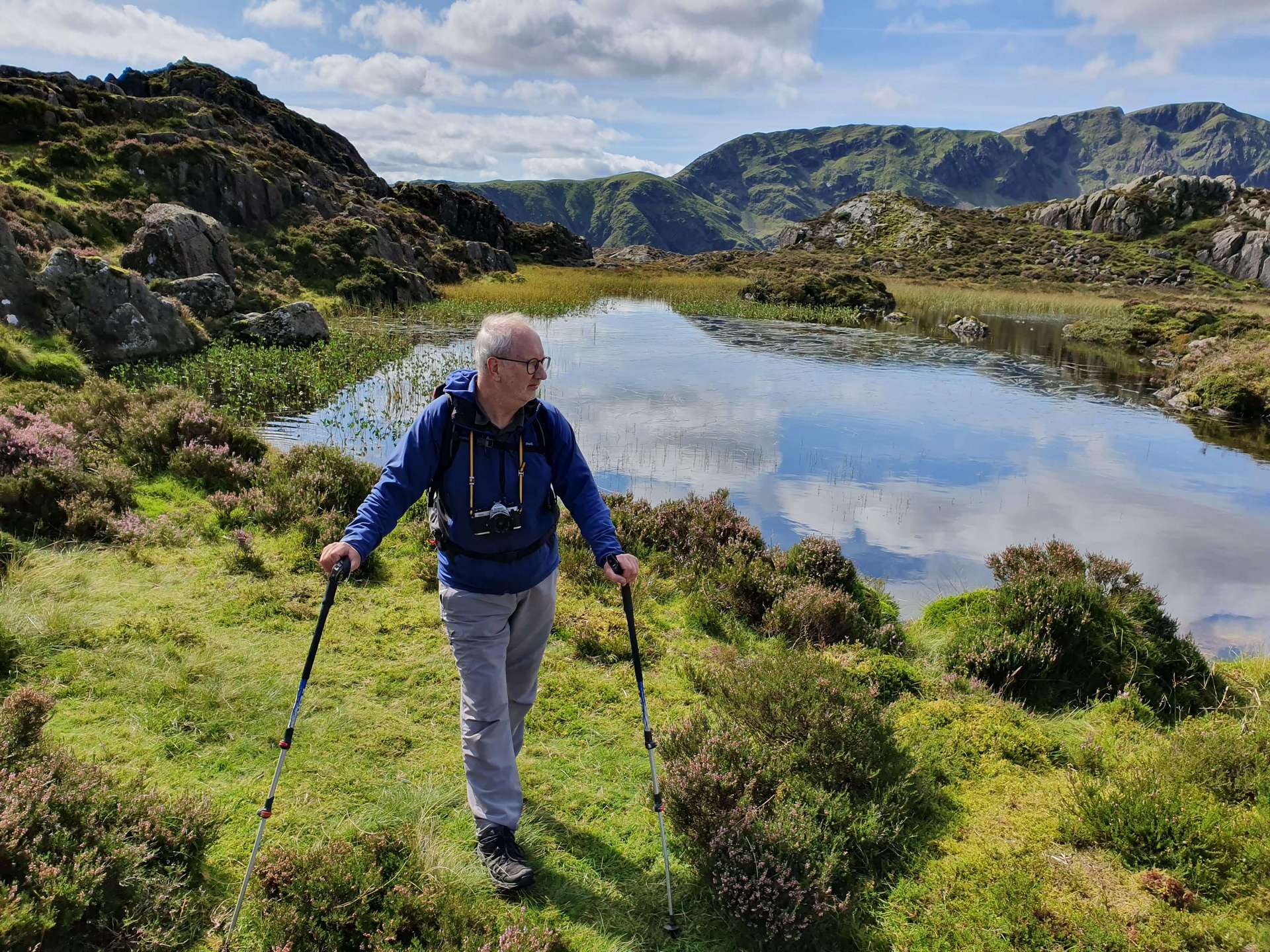
Although my previous ascents of Haystacks were memorable, I never entirely appreciated AW’s profound affection for this area until I explored it more thoroughly with Richard. It’s an unpretentious fell, much like a humble backdrop in a grand landscape. Wainwright’s analogy of it being “a shaggy terrier in the company of foxhounds” captures its character perfectly—a rugged, unassuming presence amidst more prominent peaks.
There’s a rich tapestry of experiences to uncover on this craggy plateau, where each visit reveals something previously unnoticed. The honour of accompanying Richard and his wife on this poignant journey was not lost on Priscilla and me. We were part of a special remembrance, a tribute to a Lakeland legend whose legacy lives on. Wainwright brought the fells to vibrant life, making them accessible to millions through his simple yet passionate use of pen and ink, coupled with an unwavering love and devotion for these landscapes.
This day was more than a walk; it was a pilgrimage through Wainwright’s beloved Lakeland, a chance to understand why he chose Innominate Tarn as his final resting place. It was an experience that deepened our appreciation of both the fell and the man who immortalised it.

<<>>
All Nikon FM2 Photos courtesy of Richard Else, BBC Producer and author of Wainwright Revealed.
Back to top of page

